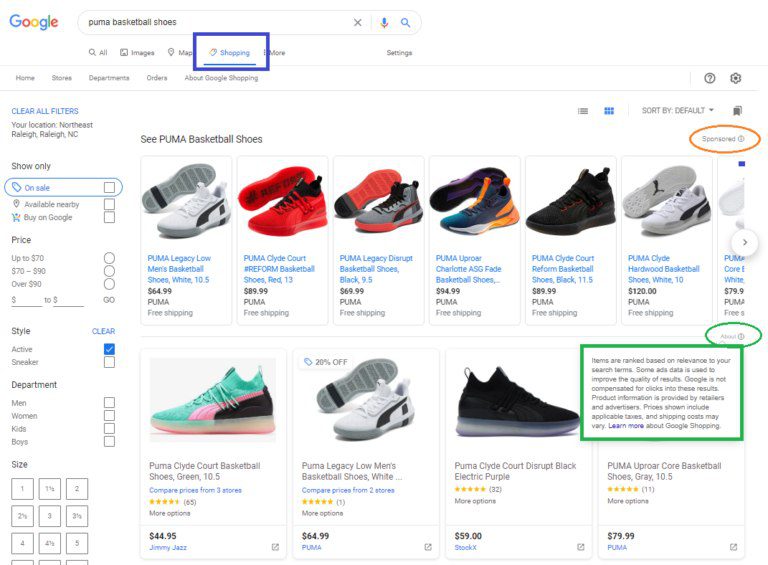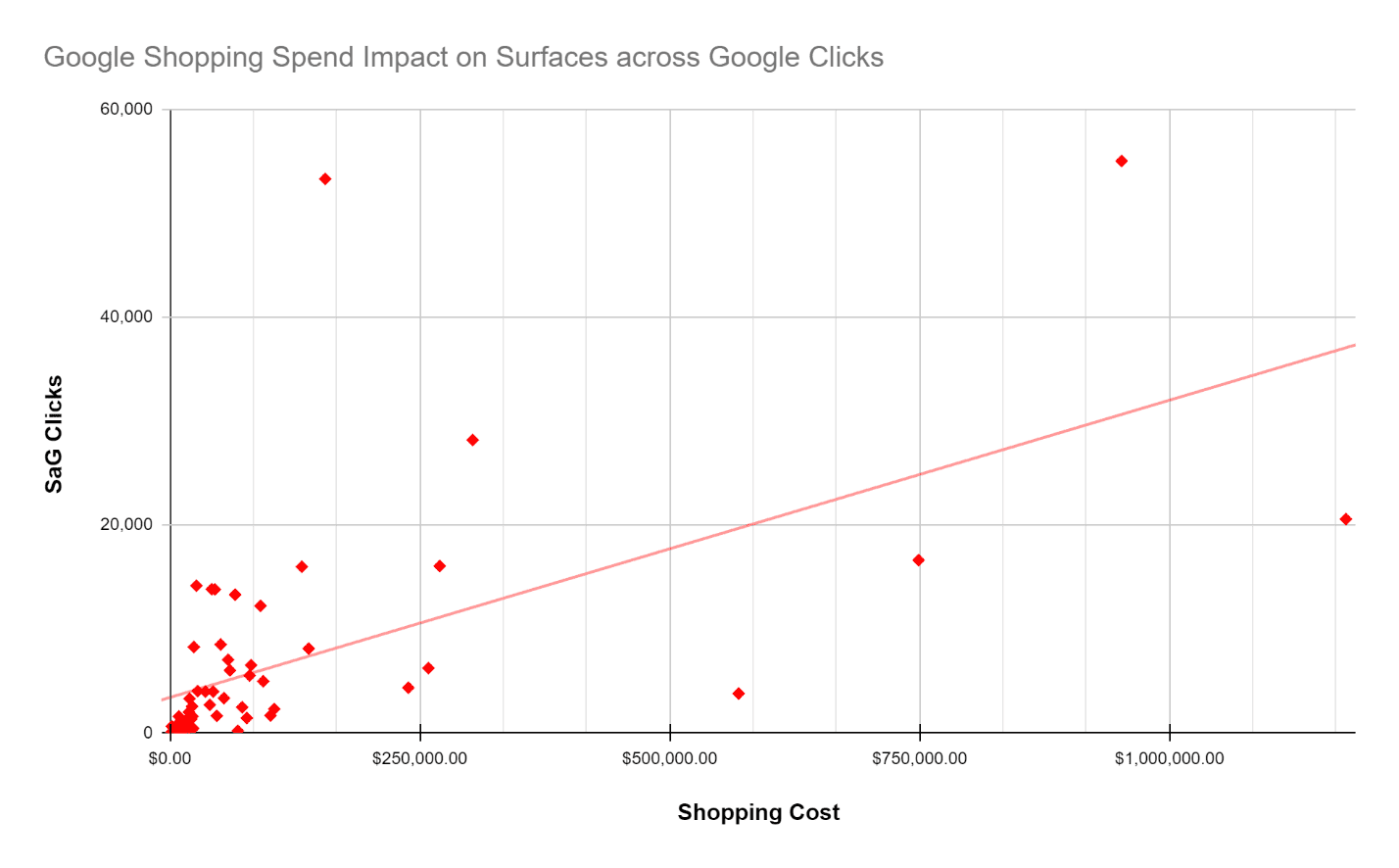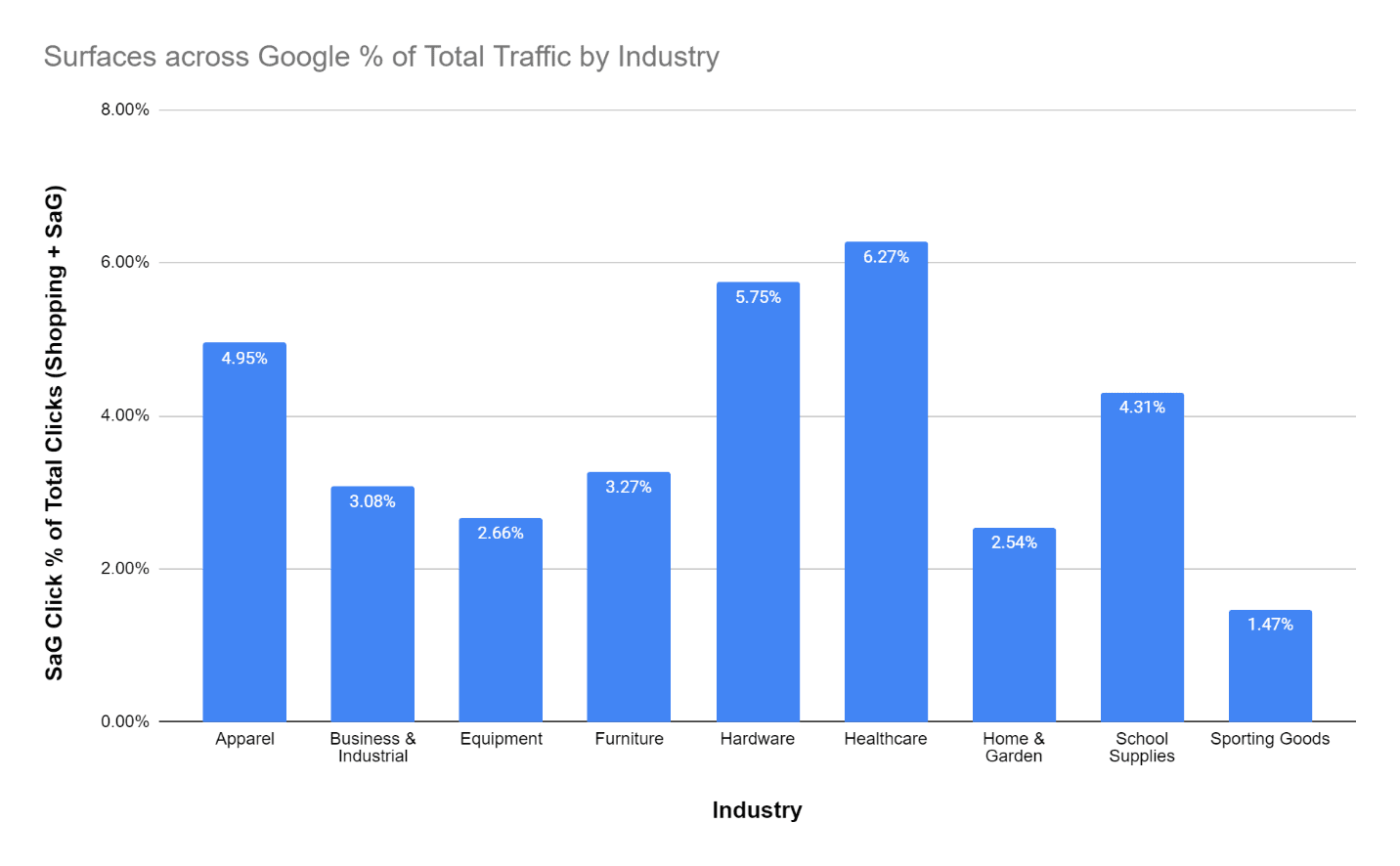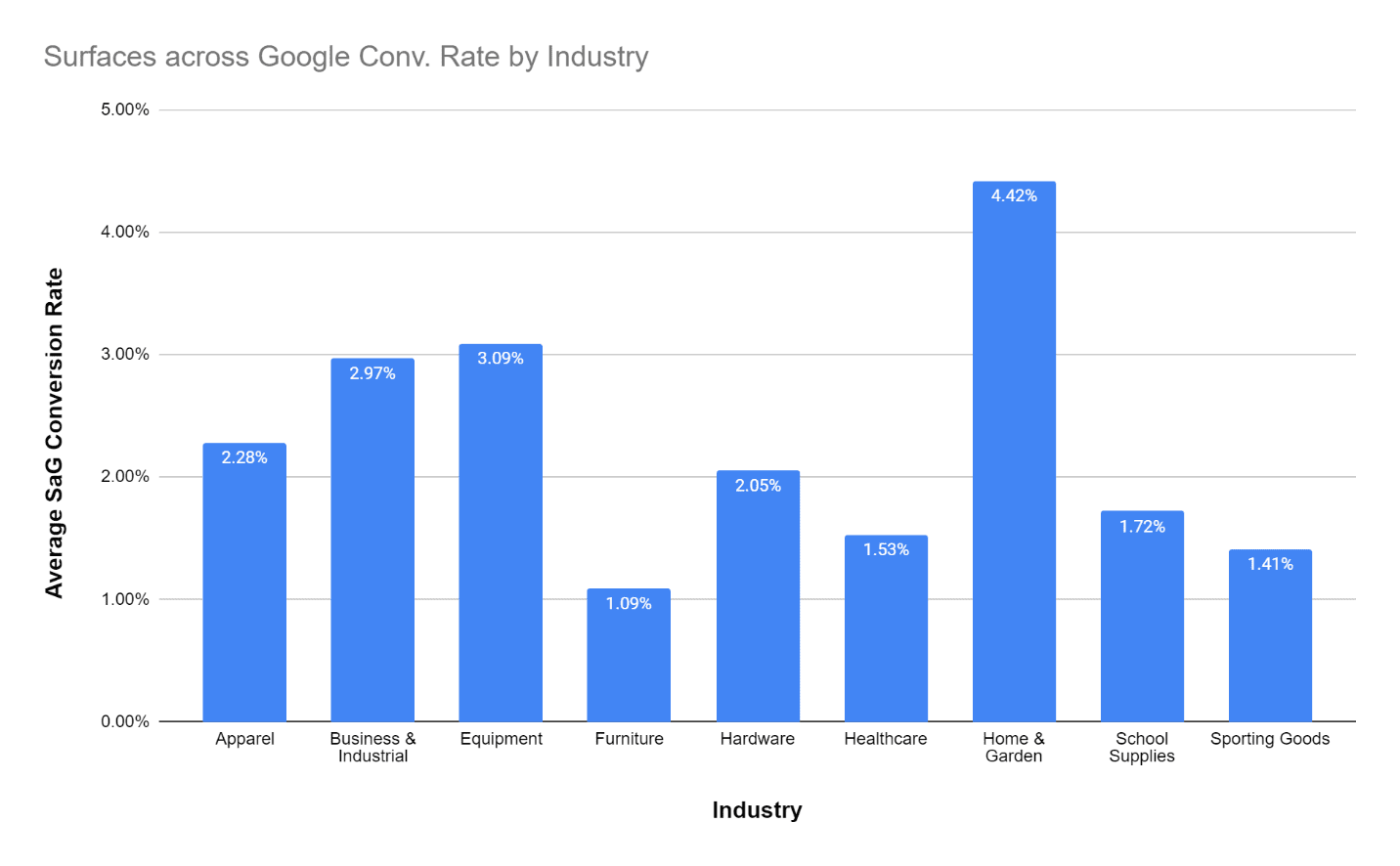When Google announced their immediate plans to roll out a version of unpaid (free!) Google Shopping listings on April 21, 2020, merchants and advertisers alike were excited.
Free listings on Google Shopping (and even Google search results pages, based on a more recent update) that could lead to site traffic and potentially transactions sounds fantastic. But the first questions that quickly popped into advertisers’ minds were, “How can we track this?” and “What will the impact even be, knowing that the Shopping Tab doesn’t drive a majority of traffic for Google Shopping?”
While we don’t have all the answers yet (especially with the official reporting from Google still being scarce), we do have an early look at overall click trends, conversion rates, share of revenue, and a few more metrics.
In this mini case study, we will cover a quick recap of the Surfaces Across Google program, how we at ROI track performance for our clients, look at 30 days of performance across dozens of industries, and provide our initial takeaways on Surfaces Across Google.
Review of Surfaces Across Google
Surfaces Across Google originally was announced in Q4 2019 with some basic information about product results that could be based on a feed or based on site schema information, as well as directions on how to opt into the program.
The more interesting announcement in Q2 2020 highlighted major updates to the program that would reveal that the Google Shopping tab in the United States would consist of mostly unpaid listings.

The image here showcases how the Google Shopping tab looks now, with ad units and unpaid listings split into two different sections.
The Shopping Ads are displayed in a scrolling carousel under the “Sponsored” section, whereas the unpaid listings for Surfaces across Google are featured under the “About” section.
The “About” section notes state that listings displayed in this portion are ranked based on relevance to search terms and that some ad data is used to improve the quality of the results, but that Google is not compensated for clicks. This means that optimized and well-managed product feed data will help Surfaces across Google performance alongside the benefits it already has for regular Google Shopping performance and management.
These unpaid listings operate exactly like the previous “Compare Stores” listings on the Google Shopping tab, with Google grouping sellers into one singular listing for an item based on the Brand, MPN, or primarily GTIN. When clicked, they lead directly to product detail pages on the seller’s site.
Tracking Surfaces Across Google Performance
Any time that a shopper comes to a merchant’s site, the merchant would want to know where that click came from and how the shopper arrived, right?
Well, at first, Google didn’t provide a great way to do that. All that was available to merchants was unpaid click totals at an account level in the Google Merchant Center.
For the first few weeks – starting April 21 when the program launched – many advertisers couldn’t track the performance and all the Surfaces Across Google traffic was being attributed to “google / organic” in Google Analytics.
After a few conversations with Google, ROI determined the best way to track and attribute the unpaid clicks using a workaround with a few standard Google attributes, as follows.
The ads_redirect attribute will always override the link attribute in the Google Merchant Center.
- The ads_redirect attribute is only recognized by the Shopping Ads and Dynamic Remarketing programs, not by the Surfaces Across Google program.
- Link is the only “product URL” type attribute recognized and eligible to be used for Surfaces Across Google.
With this information, merchants can do the following:
- Pass an ads_redirect attribute that is a direct link to the product detail page for the item ID.
- Pass the link attribute with UTM tracking (since it will be overridden for Shopping Ads by the ads_redirect).
ROI’s preferred tracking to append to the standard link is “?utm_source=google&utm_medium=organic&utm_campaign=surfaces-across-google”. (Note: If the product URL already contains a “?”, please remember to start the tagging with an & instead!)
Once this tagging is added, merchants can then view a Source/Medium report in Google Analytics and segment that performance to “google / organic” for Source / Medium and then add Campaign as a secondary dimension. An example is below:

More recently, ROI has also been tagging the link attribute with an additional parameter of “utm_term=[id]” to track item ID-level performance and track SKU-specific transactions and revenue in Google Analytics, as well!
Initial Performance Data
When looking at this initial data, ROI wanted to determine at least two things:
1. What percentage of total Shopping Ads + Shopping Tab clicks does Surfaces across Google account for? (Is it significantly less than the 5-10% estimate that Google has always provided? Does it vary across industries?)
2. Does overall Shopping Spend and Shopping click traffic have a correlation with Surfaces Across Google unpaid click volume?
Below are some interesting metrics for ~60 accounts over a 30-day period:


Most of the accounts in the test were in a more concentrated spend level below $100k over a 30-day period. Therefore, many of the points plotted are grouped there and the chart is heavily influenced by outliers.
Based on the charted trendline, we are seeing a positive relationship between these two variables: on average, $1 of incremental Google Shopping spend is associated with 0.0286 incremental Unpaid Clicks. Based on that relationship:
- $34.96 in Shopping Spend accounts for 1 Unpaid Click
- $34.96 in Shopping Spend also accounts for 61.33 Shopping Clicks
- $34.96 in Shopping Spend could account for a total combined value of $177.43
- $177.43 derived from Shopping Click value + Unpaid Click value
This is, on average, 2.5% more revenue at no extra cost by running the Surfaces across Google program (based on the sampled data).
(Note: Data results above were derived by conducting a simple linear regression analysis, which also found the relationship between these variables to be statistically significant.)
 In total, unpaid clicks accounted for 3.24% of all click traffic on what previously was considered Google Shopping traffic.
In total, unpaid clicks accounted for 3.24% of all click traffic on what previously was considered Google Shopping traffic.
Apparel, Furniture, Hardware, Healthcare, and School Supplies all operated at higher rates, meaning that the Unpaid Clicks made up more of a share of the total traffic from Google Shopping + Surfaces Across Google.
 While Home & Garden may make up a lower percentage of the share of traffic, it far and away exceeds other industries with conversion rate through Surfaces across Google.
While Home & Garden may make up a lower percentage of the share of traffic, it far and away exceeds other industries with conversion rate through Surfaces across Google.
Conversion Rates for the program are also stronger than on Google Shopping. ROI hypothesizes that this is because if a shopper is in the Shopping tab comparing products between different sellers, they are likely further along in their purchase journey.
These Conversion Rates by industry aren’t that far off from what we see on Google Shopping performance. It is encouraging to see that in some cases, even though the share of traffic for Surfaces Across Google may be lower than expected, there are strong conversion rates to make up for it.
ROI Takeaways
The primary takeaway here is abundantly clear: There is absolutely no risk in enabling the Surfaces across Google program. The program can lead to more traffic, the program is completely free, and the program is proven to convert at a higher rate (2.7% vs. 1.62%).
Tracking is crucial. Without adding tracking to the link values, merchants won’t be able to attribute transactions and revenue from the program accurately. All the traffic will be attributed to standard “google / organic” traffic.
Google has stated that impression data for the program may not be available for some time. While it would be great for merchants to be able to view impression data for the program, it unfortunately is still not visible in any interface, so it is still difficult to understand the scope of the program and the reach that products may have.
Surfaces across Google is a no-brainer for merchants who want to expand their brand awareness and product coverage.
With strong conversion rates, improved value from a well-managed Google Shopping feed, and the opportunity to drive more traffic to your site (which may lead to more email sign-ups or remarketing opportunities), Surfaces Across Google is a great program to add to your digital advertising arsenal and could lead to a nice increase in revenue driven for free!




